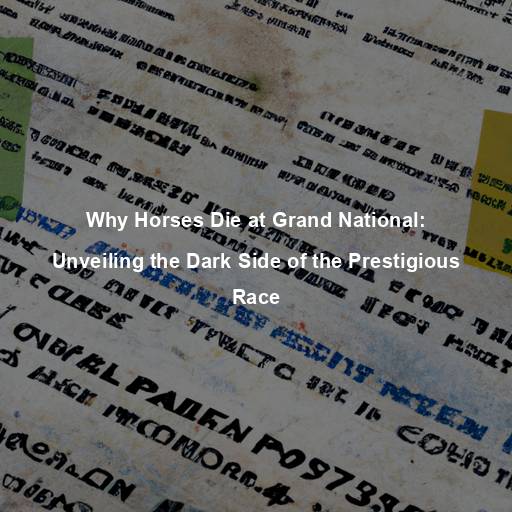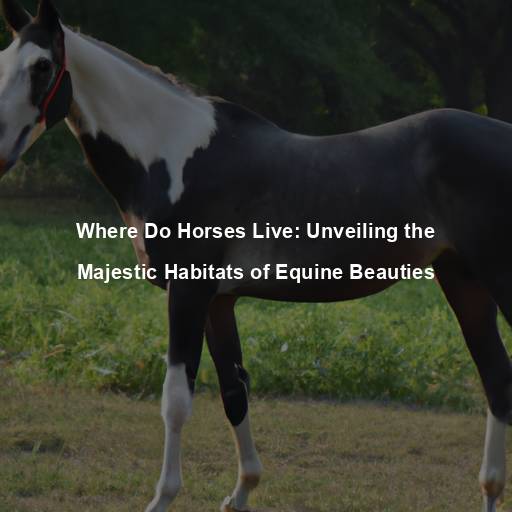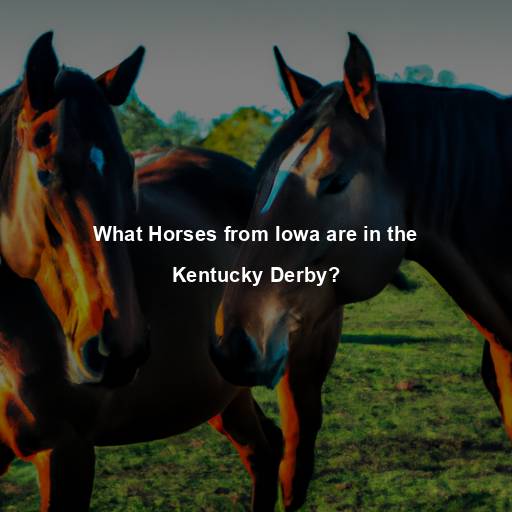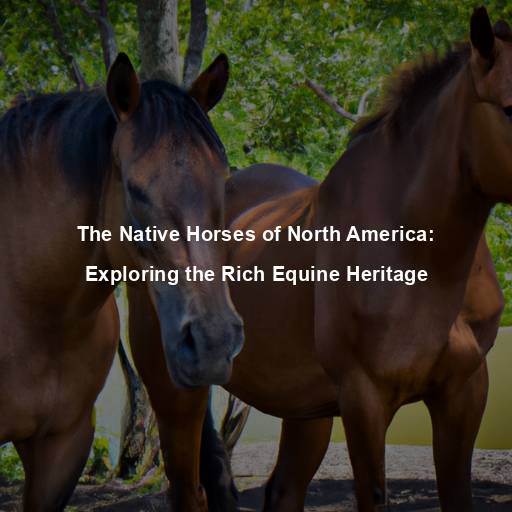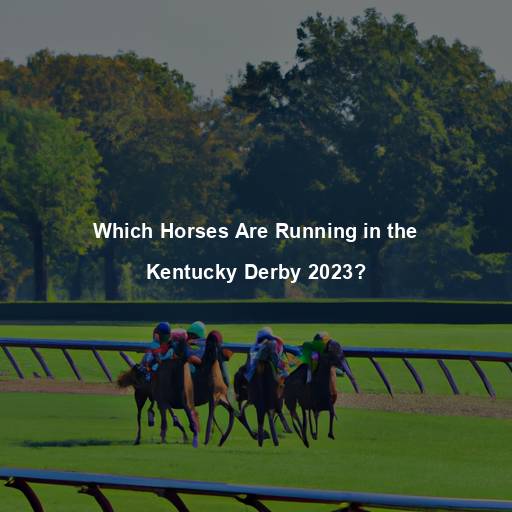Why Horses Die at Grand National: Unveiling the Dark Side of the Prestigious Race
Last Updated on August 1, 2023 by Evan
Contents
- 1 Unveiling the Tragic Reality of Grand National
- 1.1 The Grand National: A Race of Legends and Tragedies
- 1.2 The Unforgiving Nature of the Racecourse
- 1.3 The Perils of Jumping Fences
- 1.4 The Weight Factor: A Balancing Act
- 1.5 The Pressure to Perform: A Double-Edged Sword
- 1.6 The Role of Pre-Existing Injuries
- 1.7 Weather Conditions and Ground Quality
- 1.8 The Continuous Quest for Safety: Evolving Regulations
- 2 Seeking Solutions: Striking a Balance
- 3 Preserving the Spirit, Protecting Lives
- 4 Learning from the Past: Historical Context
- 5 Global Perspectives: Comparing Safety Standards
- 6 A Shared Responsibility: Moving Forward Together
- 7 In the Pursuit of a Safer Grand National
- 8 FAQs: Why Horses Die at Grand National
- 8.1 Why do horses die at the Grand National?
- 8.2 What kind of injuries do horses sustain during the Grand National?
- 8.3 Are horses well cared for during the Grand National?
- 8.4 What measures are being taken to reduce horse fatalities at the Grand National?
- 8.5 How are horse deaths at the Grand National handled?
- 8.6 What is being done to promote horse welfare in horse racing events like the Grand National?
- 8.7 Are there any plans to ban horse racing due to the risk of horse fatalities?
Unveiling the Tragic Reality of Grand National
The Grand National: A Race of Legends and Tragedies
The Grand National, a legendary race praised for its challenge and allure, enthralls countless fans across the globe. Amidst the excitement and uncertainty, an atmosphere of exhilaration grips the surroundings, intensifying with every gallop and leap. Yet, amidst the glory and spectacle, a somber truth remains hidden. The Grand National has become synonymous with heartbreak, as we plunge into the depths of the perplexing and interconnected elements that have tragically claimed the lives of horses, igniting impassioned discussions and disquieting debates.
The Unforgiving Nature of the Racecourse
The Grand National, hosted at the iconic Aintree Racecourse in Liverpool, England, poses a formidable challenge to both horse and rider. The treacherous course spans approximately 4 miles and 2½ furlongs, comprising 30 demanding fences, including the notorious Becher’s Brook and The Chair. These obstacles, combined with the undulating terrain and unpredictable weather conditions, create a daunting environment that tests the limits of equine athleticism and stamina.
The Perils of Jumping Fences
National Hunt racing is an exhilarating sport that pushes both horses and jockeys to their limits. The Grand National, in particular, amplifies the pulse-pounding action with its towering hurdles and treacherous terrain. As the horses leap over these formidable obstacles, one can’t help but feel a mix of awe and unease, knowing that the margin of error is razor-thin. Unfortunately, in this high-stakes game, falls and injuries are an ever-present specter, reminding us of the fragility of these magnificent creatures.
The Weight Factor: A Balancing Act
When it comes to the exhilarating world of horse racing, one cannot underestimate the importance of weight. It’s like a conductor orchestrating a symphony, where every pound matters and can make or break a horse’s performance on the track. Take the prestigious Grand National, for example, where these majestic creatures have to bear a substantial load of at least 140 pounds, or 10 stone. Can you even fathom the toll it takes on their bodies?
The Pressure to Perform: A Double-Edged Sword
The allure of the Grand National lies in its captivating blend of exhilarating moments and grandiosity, summoning the attention of elite trainers, skilled jockeys, and esteemed owners hailing from all corners of the globe. Yet, amidst the grandeur and promise of triumph, an unsettling truth occasionally emerges – the pursuit of victory can lead to daring choices that jeopardize the well-being of these magnificent creatures. A precarious tightrope is navigated by trainers and jockeys alike, maneuvering the fine balance between pushing the limits of equine potential and safeguarding their precious lives. Alas, in the fervent quest for the elusive crown, the distinction between effervescent audacity and compromising the welfare of these noble horses can become shrouded in ambiguity.
The Role of Pre-Existing Injuries
The Grand National, known for its formidable challenges, presents a thrilling yet daunting journey where the margin for error is razor-thin. It’s an arena where even the slightest of injuries, whether apparent or hidden, can magnify into unabated risks throughout the unforgiving course. Although meticulous veterinarian examinations are a prerequisite, the enigmatic nature of some injuries may elude scrutiny, further complicating the matter. When pre-existing conditions intertwine with the sheer intensity of the race, the outcomes for these awe-inspiring equine athletes can descend into a realm of perplexing tragedies.
Weather Conditions and Ground Quality
The unpredictability of British weather adds an additional layer of complexity to the Grand National. Rain-soaked ground can become treacherously soft, while dry conditions can create hard and unforgiving terrain. These variations in ground quality significantly impact the race’s outcome and the safety of the participants. Horses struggling to maintain their footing in challenging ground conditions are at a higher risk of stumbling, falling, or sustaining injuries that may prove fatal.
The Continuous Quest for Safety: Evolving Regulations
As the equestrian world continues to evolve, it becomes evident that the welfare of our equine companions is a top priority. Race organizers and governing bodies have tirelessly worked to introduce safety measures that address the concerns surrounding horse racing. From revamping fences to incorporate softer cores and lowering their height, to implementing rigorous pre-race assessments and improving veterinary care, the goal is clear: to reduce the severity of falls and injuries, and to only allow healthy horses to compete. Through ongoing dedication and unwavering commitment, the Grand National aims to navigate the complex web of risks and ensure a safer environment for all involved.
Seeking Solutions: Striking a Balance
The Ethical Dilemma: Tradition vs. Welfare
The captivating tale of the Grand National is one that resonates in the deepest corners of British horse racing. Yet, as we delve into the depths of our conscience, the stirring debates surrounding animal welfare echo louder than ever before. Navigating the delicate terrain between honoring tradition and safeguarding equine lives becomes a labyrinth of perplexity. It is imperative for us to unravel innovative strategies that uphold the fervor and allure of the race, while diminishing the inherent hazards that lie ahead.
Enhanced Training and Preparation
Ensuring the safety of both horses and jockeys during the highly anticipated Grand National requires a bold approach that guarantees thorough training and preparation. Acknowledging the unpredictable nature of the race, investing in comprehensive programs that cover a multitude of areas becomes imperative. From honing the horses’ physical prowess through tailored fitness regimes and specialized jumping training to equipping jockeys with the necessary skills and knowledge to navigate the perilous course, every effort must be made to mitigate the inherent risks. By embracing these proactive measures, the racing community can foster a safer and more secure environment for all involved.
Stricter Qualification Criteria
Revisiting the qualification criteria for the Grand National can help ensure that only the most experienced and capable horses are allowed to compete. Heightened scrutiny of a horse’s previous racing history, performance records, and overall fitness can serve as valuable indicators of their suitability for such a demanding race. By raising the bar for participation, the overall safety of the race can be significantly improved.
Continuous Research and Innovation
The Grand National, a prominent event in the equestrian world, recognizes the importance of pushing the envelope when it comes to horse and rider safety. Embracing a collaborative approach that involves veterinarians, trainers, scientists, and industry experts, the aim is to harness the power of research and innovation. This dynamic approach drives the development of revolutionary equipment, advancements in track surfaces, and the implementation of cutting-edge injury prevention techniques. By actively staying ahead of the curve, the Grand National has the potential to transform into a safer and more sustainable event.
Education and Awareness
Raising awareness and embracing the complexities of the Grand National is crucial for the well-being of both its participants and spectators. Encouraging an honest and open conversation about the intricacies, potential dangers, and ethical concerns associated with the event can lead to a deeper comprehension of the sport. By fostering a sense of compassion and reverence for the majestic horses involved, we can collectively strive towards ensuring a safer and more responsible environment for all involved parties.
The Responsibility of Spectators
In the realm of equestrian sports, the preservation of equine welfare is a shared responsibility. While race organizers, trainers, and jockeys shoulder much of the burden, it is important not to underestimate the impact that spectators can have. By voicing their concerns and advocating for ethical treatment, fans wield a power that can influence the racing industry for the better. Let us unite and amplify our voices to champion the well-being of these majestic creatures, and demand nothing short of impeccable care.
Preserving the Spirit, Protecting Lives
The Grand National, a race that encapsulates bravery, athleticism, and an indomitable spirit, is not without its shadows. The race track has unfortunately witnessed heart-wrenching losses of noble equine lives. However, instead of shying away from these uncomfortable truths, it is crucial to confront the multifaceted elements that contribute to such incidents and engage in open, proactive discussions. It is by delicately balancing the preservation of the race’s magnificence with a steadfast commitment to the welfare of these majestic horses that we can endeavor to forge a future where the Grand National stands as a beacon of racing excellence, free from the specter of needless tragedies.
The Myth of Inherent Cruelty
One common misconception surrounding the Grand National is the belief that the race is inherently cruel to horses. While it is undeniable that accidents and fatalities occur, it is important to recognize that the racing industry as a whole has made significant strides in improving equine welfare and safety. The Grand National, like any high-intensity sport, carries inherent risks, but efforts to minimize these risks are ongoing. Painting the race with a broad brush of cruelty overlooks the substantial measures taken to protect the horses and ensure their well-being.
The Role of Animal Rights Activism
Animal rights activists have long been vocal critics of horse racing, including the Grand National. While their concerns for animal welfare are commendable, it is essential to distinguish between legitimate criticism and sensationalized claims. Engaging in constructive dialogue with activists can foster a better understanding of their concerns and potentially lead to collaborative efforts to improve safety standards. By working together, we can strive for a balanced approach that respects both the welfare of the horses and the cultural significance of the sport.
The Impact of Public Perception
The Grand National, a captivating event that captures the imagination of millions, finds itself entangled in a complex web of public opinion. The power of perception, subject to the unpredictable currents of media coverage and the wild twists of sensationalism, holds sway over the destiny of this historic race. Tread cautiously, for the narratives woven by the press may obscure truth and ignite the flames of public discontent. Beneath this tempestuous surface lies a vital truth: the racing industry grapples earnestly with the challenges of safety and welfare.
Learning from the Past: Historical Context
A Brief History of the Grand National
The Grand National has a rich history dating back to its first official running in 1839. Over the years, it has become one of the most iconic and prestigious horse races in the world. The racecourse has witnessed triumphs, tragedies, and extraordinary displays of equine athleticism. While the focus often falls on the unfortunate incidents, it is important to acknowledge the countless successful and injury-free runs that have occurred throughout the race’s long history.
Evolving Safety Measures
As the spotlight shines on the Grand National, inevitable debates about horse welfare and safety arise. Yet, amidst the perplexing complexities, let’s acknowledge the tireless evolution of the racing industry in its quest to address these valid concerns. From the enigmatic reimagining of fences to the heightened presence of vigilant veterinarians and the adoption of progressive training techniques, the sport has conscientiously strived to enhance the safety of its noble participants. The unwavering commitment to learning from past experiences and adapting practices is a testament to the unyielding dedication to safeguard the well-being of these majestic creatures.
Tragic Incidents: Catalysts for Change
Throughout the illustrious history of the Grand National, the sport has endured heart-wrenching moments that have propelled the implementation of crucial safety guidelines. With each tragic incident, careful scrutiny and deep introspection have driven the quest for preventive measures. These poignant episodes have spurred the racing industry to prioritize the well-being of the majestic horses, fortifying their relentless dedication to curbing risks. By heeding somber lessons, invaluable safety protocols have emerged, testament to the unwavering commitment to safeguarding both animal welfare and the integrity of the sport.
Global Perspectives: Comparing Safety Standards
The International Landscape
Horse races, like the celebrated Grand National, confront an arduous task of safeguarding the welfare and security of their equine participants. However, it is imperative to acknowledge that this race is not alone in facing such challenges. Horse racing events spanning the globe grapple with comparable obstacles, each governed by its own unique safety standards and regulations. By discerning these diversified standards and comparing them, one can glean invaluable insights into exemplary practices, thus bolstering endeavors to enhance the safety of the Grand National.
Case Studies: Learning from Other Races
Analyzing the safety measures implemented in other prominent horse races can provide a broader perspective on equine welfare. Races such as the Kentucky Derby in the United States, the Melbourne Cup in Australia, and the Prix de l’Arc de Triomphe in France have all faced their fair share of scrutiny and subsequent improvements. Studying the approaches taken by these races can contribute to a more comprehensive understanding of safety measures and inspire innovative solutions for the Grand National.
Collaboration and Transparency
Delving into the intricate realm of horse welfare at the revered Grand National calls for a multi-faceted approach that embraces both unity and clarity. Harmonious collaboration between a plethora of stakeholders, from race organizers and trainers to jockeys, veterinarians, regulatory bodies, and animal welfare organizations, becomes paramount in forging a path towards a common objective. The foundation for progress lies in the unreserved exchange of thoughts, the sharing of invaluable expertise, and an unwavering dedication to perpetual growth and refinement. Only through this intricate tapestry of cooperation can the complexities surrounding horse welfare unravel and pave the way for lasting transformation.
Embracing Technological Advances
Advancements in technology offer promising opportunities to enhance the safety of horse racing. From track surfaces designed to minimize injuries to wearable sensors that monitor vital signs during races, innovative solutions can significantly contribute to the well-being of horses. Embracing these technological advances and exploring their practical applications within the context of the Grand National can lead to tangible improvements in equine welfare.
Educating Future Generations
Creating a lasting legacy for the Grand National calls for an unwavering commitment to horse welfare, a matter not to be taken lightly. With the goal of nurturing a mindset that truly appreciates and champions equine well-being, we must embrace the power of education. By intertwining immersive learning experiences within educational institutions and racing circles alike, we can plant the seeds of compassion, grow a culture that safeguards the beautiful creatures that grace the track, and ensure the future of this beloved sport.
The Evolving Grand National
As the Grand National gallops forward, it’s crucial to keep a watchful eye on the course ahead and stay flexible in the face of potential curveballs. By meticulously examining safety records, regularly evaluating regulations, and steadfastly researching emerging concerns, this legendary race can gracefully adapt to stay at the forefront of sporting glory, all while prioritizing the well-being of its four-legged heroes.
In the Pursuit of a Safer Grand National
The Grand National is a race that has captured the imaginations of millions around the world for generations. While the occurrence of accidents and fatalities weighs heavily on our collective consciousness, it is crucial to approach the topic with an open mind, seeking to understand the complexities and nuances involved. By acknowledging the risks, learning from the past, and collectively working towards a safer and more responsible future, we can ensure that the Grand National remains a testament to equine athleticism and a celebration of the extraordinary bond between horses and humans.
FAQs: Why Horses Die at Grand National
Why do horses die at the Grand National?
Unfortunately, horse fatalities can occur during the Grand National due to a combination of factors. The race itself is famously challenging and demanding, featuring formidable fences and challenging terrain. These intense conditions can sometimes lead to accidents, falls, and collisions, which increase the risk of injury to both horses and jockeys. Furthermore, the high speed and competitive nature of the race add to the risk factors, making accidents more likely to happen.
What kind of injuries do horses sustain during the Grand National?
The Grand National, a thrilling equestrian event that leaves spectators on the edge of their seats, is not without its share of concerns. The noble horses that partake in this prestigious race often experience a myriad of injuries that leave us pondering over the delicate balance between the pursuit of glory and the safety of these magnificent creatures. From perilous falls to unexpected collisions with both unforgiving fences and fellow equine athletes, the potential for harm lingers in the air. These incidents have been known to result in fractures, dislocations, and even dire soft tissue damage, casting a shadow of perplexity over the very essence of this exhilarating event. Moreover, the formidable physical strain and relentless exhaustion endured by these gallant stallions during the race further complicates matters by heightening the risk of injury or exacerbating pre-existing conditions.
Are horses well cared for during the Grand National?
In the ever-vibrant realm of Grand National and the captivating world of horse racing, the welfare and tranquility of these majestic creatures reign supreme. Meticulously orchestrated by an assembly of passionate race organizers, vigilant regulatory bodies, and seasoned veterinary experts, an intricate tapestry of protocols and safeguards is ingeniously woven to safeguard these equine athletes. Intriguingly, before the race commences, a dazzling display of thorough health checks unfurls, separating the truly fit and primed horses from the rest. To boot, the watchful gaze of dedicated veterinarians ever-present on the grounds ensures prompt medical care in the unlikely event of any untoward injuries occurring.
What measures are being taken to reduce horse fatalities at the Grand National?
The Grand National, an iconic event that combines adrenaline with elegance, has been the subject of unrelenting dedication to ensuring the well-being of its noble participants. A relentless pursuit of improvements in safety measures has become embedded in the very fabric of this equestrian spectacle. With every galloping stride, organizers tango with the boundaries of unpredictability, continuously reimagining the course, refining the fences, and tweaking race conditions to shepherd the athletes to a place of greater security. Collaborations with veterinary virtuosos bring forth a symphony of care, as stringent regulations are instituted to showcase the reverence for horse welfare. But the journey towards excellence does not halt at tradition; it embraces the winds of innovation. Eagerly embracing the findings of pioneering research and the breakthroughs of technological marvels, the racehorse realm harnesses this knowledge to fashion an armor of fortitude. The soul of the Grand National beckons not just for victories, but for the protection of both majestic equines and intrepid jockeys alike from the perils lurking in the shadows of the course.
How are horse deaths at the Grand National handled?
Every horse fatality at the Grand National is undoubtedly a tragic event and taken very seriously. A comprehensive investigation is conducted following such incidents to determine the cause and understand if any improvements can be made to prevent similar accidents in the future. Race organizers, veterinary experts, and regulatory bodies analyze various aspects, including fencing, risk factors, track conditions, and veterinary care, to ensure the continued improvement of safety measures and horse welfare.
What is being done to promote horse welfare in horse racing events like the Grand National?
Promoting horse welfare is a vital aspect of contemporary horse racing, including the Grand National. Rigorous regulations and standards are enforced, covering various aspects such as horse selection, training methods, medication usage, and track conditions. Regular inspections and health checks are conducted to ensure horses are in optimal physical condition and are fit to participate. The industry also invests in research and education to further improve the well-being of horses and to raise awareness among all involved parties, including trainers, jockeys, and owners, about the importance of horse welfare.
Are there any plans to ban horse racing due to the risk of horse fatalities?
While horse fatalities are undoubtedly a significant concern, there are no current plans to ban horse racing outright. Instead, the focus remains on continuously improving safety measures, implementing stricter regulations, and raising awareness about horse welfare to minimize the risk of accidents. The Grand National and other horse racing events contribute significantly to the cultural heritage and economy, and efforts are being made to strike a balance between maintaining the traditions of the sport and safeguarding the welfare of horses.

